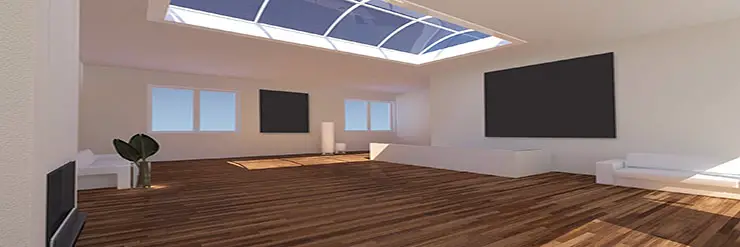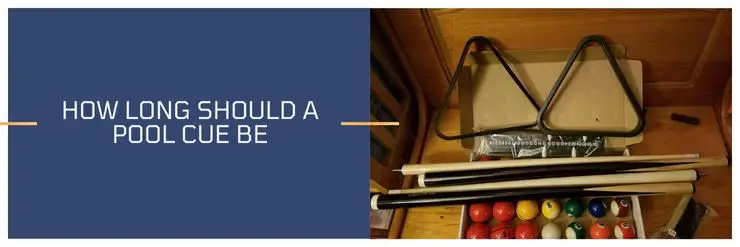Thinking about adding a pool table to an upstairs room? Getting it up the stairs is one thing; the other thing to consider is whether the second floor can hold the weight of the table. So, can a pool table go upstairs?
If the house is up to building code standards then it should be completely fine to put a pool table upstairs. MDF tables will be better suited upstairs as they are lighter. You may need to reinforce your floor or attic to accommodate a pool table but always consult a professional beforehand.
It is highly unlikely that the pool table will come crashing through the ceiling, but there are still some things to take into consideration. Most pool tables are around 500 lbs which is a lot of weight on the flooring.
Read more about putting a pool table upstairs or in the loft with ways to reinforce your floor and how to move your table upstairs!
- Can you put a pool table upstairs on the second floor
- How much weight can the average upstairs floor hold in a house
- Things to Consider About an Upstairs Pool Table
- Will the loft of a house, hold the weight of a pool table
- What steps can I take to reinforce my upstairs floor to support the weight of a pool table
- Other Factors to Note with Pool Tables Being Upstairs
- Can a Pool Table Go Upstairs in Old Houses
- Can a Pool Table Fall Through the Floor
- How to Prevent Issues with an Upstairs Pool Table
- How do you get a pool table upstairs
- Conclusion
Can you put a pool table upstairs on the second floor
Most modern build houses should be able to support a pool table that has an MDF table bed but they might struggle under the weight of a pool table with a slate table bed. It really depends on the construction of your home and the design of the stairs.
Can a pool table go upstairs depends on a few factors.
If you have an open floor plan and the second floor is just a large, flat space with no obstructions, then technically there’s no reason why you couldn’t put a pool table up there.
However, if your second floor is full of bedrooms, bathrooms or other smaller spaces, then it might not be the best idea to put a pool table in the middle of everything.
You will have to consult a building specialist to get their professional opinion, but if you have an MDF or particleboard pool table there is a chance it will be fine to put a pool table on second floor.
Are pool tables too heavy for the second floor, will depend on the type of table, either slate or wood and the strength of your floor, and also what the floor currently holds?
How much weight can the average upstairs floor hold in a house
This depends on a variety of factors. However, as a general rule of thumb, the average floor in a house can hold around 40-50 pounds per square foot.
This means that if your pool table weighs around 400 pounds, the upstairs floor should be able to support it.
To make it a little simpler, most modern houses should be able to support a pool table upstairs if the pool table has an MDF or particleboard bed as these tables are much lighter – probably lighter than most double beds.
Your real questions come about if your pool table has a slate bed. These tables are much heavier.
Find out how to tell if your table is slate here
If you are still unsure whether or not your floor can support the weight of a pool table, it is best to consult with a professional.
Things to Consider About an Upstairs Pool Table
Of course one of the hardest things about keeping a pool table upstairs is getting the table upstairs in the first place.
Moving the table is its own separate challenge. Check out below or click here how to move a pool able upstairs
Weight Limits
As long as the home’s second-floor level meets standard building codes it should be fine for holding the weight of a pool table. You should check what the weight limit is for the second floor and compare that with the weight of the pool table. Pool tables can weigh up to 1,000 lbs and average at around 500 lbs.
Older homes may have a less sturdy upper floor and might need upgraded flooring to be able to handle the weight of the pool table, but this is rare. The weight limit for the floor is based on the square footing, for example, floors generally can support between 30-50 lbs per square foot. This way you can calculate the weight limit by multiplying the dimensions of the room by how much weight each square foot can support.
The best way to find out what the weight limit is for the second floor is to consult with a building expert. You may also be able to find the information about the floor weight limit by looking at the building’s blueprints or consulting local building codes.
If local codes require a weight limit that is more than the weight of the pool table then you should be good to go. The only problem here is if the home is older it may have been built to different codes than modern-day homes.
Upstairs Flooring
Most homes have at least three layers of flooring including the upper floor covering and the lower layers of subflooring and joints. Downstairs flooring often has a concrete slab underneath, but upstairs flooring relies on layers of treated wood such as slabs of plywood which may flex under the weight of the pool table.
Subflooring
The flooring that we see such as hardwood or carpet is only one layer of the flooring structure. Underneath the floor cover there is a subfloor and floor joists which are for adding structural support. The thickness of the subflooring is something that has an effect on how well the floor can withstand the weight of the pool table. A thick subfloor will bend less under the weight.
Floor Joists
The floor joists work in conjunction with the subfloor to provide a strong and stable flooring structure. Floor joists are horizontal beams of treated wood which connect the floors with the walls as well as adding structural integrity to the floor itself. Knowing where the floor joists are can help the homeowner to ensure that the pool table is placed properly to prevent flexing of the floorboards under the weight of the pool table. By placing the legs of the pool table directly along the floor joists you may be able to get more support to prevent floor warping.
How to Determine the Type of Flooring
The easiest way to find out what kind of flooring is on the second story of a home is to look at the blueprints and building plan for the house. If these documents are not available there are a few other ways to determine what kind of flooring is used for the upstairs of a home.
If there is a vent in the floor for the HVAC system then you should be able to remove the vent and get a look at the layers under the floor covering. Vents in the floor can usually be easily removed by pulling them upwards and will reveal what lies under the carpet or hardwood. Unfinished flooring in an attic crawlspace or at the top of the stairs can also open up an area for getting a look at the subfloor and joist layers.
Will the loft of a house, hold the weight of a pool table
It depends on a variety of factors, such as the weight of the pool table, the construction of the house, and the condition of the loft. There is a good chance your loft can hold a pool table weight but it is important to consult with a professional.
It’s possible that in most modern built houses, will be able to hold a pool table upstairs in the attic but it’s still essential you consult a structural engineer
A pool table is a heavy piece of furniture, and it’s important to make sure that it will be safe to move upstairs. If your house has a loft, it’s worth checking to see if the table will fit. Some pool tables are too large to fit in a standard loft, but there are also models that are designed to be more compact.
If you do have a loft, it’s important to make sure that it is strong enough to support the weight of the pool table. The floor of the loft should be able to hold the weight of the table, as well as the people who will be playing on it. The joists in the loft should also be strong enough to support the weight of the table.
If you are unsure whether or not your house can accommodate a pool table, it is best to consult with a professional.
What steps can I take to reinforce my upstairs floor to support the weight of a pool table
If your floor is not able to support the weight of a pool table, there are a few things that you can do to reinforce it to avoid the pool table falling through floor.
- Some things that you can do to increase the load-bearing capacity of your floor is by adding more supports (such as joists) or even replacing or reinforcing the current flooring.
- Adding more supports, such as joists will help to distribute the weight of the table more evenly.
- Understanding your pool table weight distribution in relation to what your floor can handle.
If you are still unsure whether or not your floor can support the weight of a pool table, it is best to consult with a professional.
Other Factors to Note with Pool Tables Being Upstairs
Now that we have determined that pool tables can safely go upstairs as long as the building is up to code, let’s consider what other factors are important to note.
Can a Pool Table Go Upstairs in Old Houses
Putting a pool table upstairs in an old house is a bigger cause of concern. The flooring for almost all houses will safely hold the weight of most pool tables, but older buildings may have some structural concerns.
A renovated house may have more structurally sound flooring even despite its age because often unneeded layers of flooring are left in place for convenience.
Checking the records from any renovations may reveal information about how strong the floors are. If you are unsure whether or not an older house can withstand the weight of a pool table, you should check with a qualified building inspector or contractor to be absolutely sure before making any investments in putting a pool table upstairs.
Can a Pool Table Fall Through the Floor
Even with the full weight of a pool table, it is very unlikely that it will fall through the floor and through the ceiling of the room below. The floor would have to be very weak for this to happen. Any existing concerns about the integrity of the flooring upstairs should be taken as a red flag for adding a pool table.
How to Prevent Issues with an Upstairs Pool Table
Before hauling a pool table up the stairs there are a few things that can be done to prevent any possible issues.
Have the Floor Inspected
Any concerns about the flooring should be taken very seriously before adding a large amount of weight such as a pool table. If the information about the weight limits for the flooring are not available from the blueprints of the home or if the house was built a long time ago then it is a good idea to call in a home inspector to check the safety of the flooring and determine a range for the weight limit.
Reinforce the Flooring
In case of weak flooring, it may be necessary to do some renovations and add reinforcements. The easiest way to reinforce an upstairs floor is by adding another layer of wood along the floor joists for more support. Treated plywood slabs can be installed along the joists to keep the floor from feeling “bouncy” and flexing under the weight of the table.
Lighter Weight Pool Tables
The best kind of pool tables are going to have a bed made out of slate rock. These are the pool tables used for tournaments and are considered the best because the roll of the billiard ball is “true” and unaffected by the possible warping of a wooden bed table.
The downside to slate bed pool tables, other than being very expensive, is that they are also extremely heavy. For an upstairs pool table, it may be better to opt for a more lightweight and affordable pool table that is made with plywood rather than rock.
Minimize Stress on the Flooring
Other furniture in the room as the pool table should also be factored in when determining how much of a load the flooring can bear. A pool table alone can weigh upwards of 1,000 lbs, so if the other furniture in the room is very heavy it will put additional stress on the floor. Consider moving heavy cabinets and other furniture into another space in the home to minimize the amount of weight put on the floor in the pool room.
Another source of weight to consider is how many people will be standing in the room. A group of six-ten people can easily weigh 1,000 lbs. Now if a floor has a weight limit of 3,000 lbs, and you add a 1,000 lb slate bed pool table, and you have 1,000 lbs of other furniture in the same room, then having six-ten people gathered in the room as well might actually put you close to or over the room’s weight limit. For this reason, it is also important to consider how many people will be gathered in the pool room at a time.
How do you get a pool table upstairs
Pool tables are not light, so moving one can be a tricky task, this is amplified when moving a pool table upstairs. Take care when moving and if you need to turn it on its side.
It’s first worth noting if your pool table has a wood table bed or a slate one, this can be determined by the weight. Slate is a much heavier pool table bed and the weight difference will be evident.
Move a slate pool table:
- If you are to move a slate pool table upstairs you are best to first remove the slate and have it on a separate trolley, this will make life much easier. Moving the pieces separately upstairs will make things much easier.
- Piecing your slate pool table back together to ensure the slate is perfectly flat might prove tricky too.
- Moving a slate pool table upstairs without separating the slate and other pieces may be too heavy for even the strongest of people.
Move a MDF pool table:
- Wooden pool tables are much lighter, and therefore can be done in one piece. With care and strength, they can be moved upstairs by one or two people.
- It is important to remember when moving any furniture upstairs, take your time and be cautious. Furniture can easily get scratched or damaged if not treated with the proper care.
After the pool table has been moved upstairs; you will need to level the pool table – Check this article on how to do it.
If you are in any doubt as to whether or not you can move a pool table upstairs, it is best to seek professional help.
I have written many articles on moving pool tables, check this other one for more information
Conclusion
So, can a pool table go upstairs? There are very, very few stories of a pool table falling through the floor in an upstairs room so it is safe to say that this is a rare occurrence.
Most buildings can easily withstand the weight of a pool table, plus the players and any other furniture in the room.
If the house was built a long time in the past, then there is more room for concern as it may not meet modern building codes.
Reinforcing the flooring in the upstairs room can help to make sure that the floor does not bend under the weight of the pool table or cause a safety concern.
If you are unsure of whether or not your upstairs flooring is up to code, you can always check with a local building inspector. Determining the weight limit of the upstairs floor will easily decide for you whether or not putting a pool table up there is a good idea or not.
Rob is an avid player and fan of all cue sports, particularly 8-ball, and snooker. He has competed in a few local 8-ball tournaments and although he is not a professional, he can compete with the best of them.






